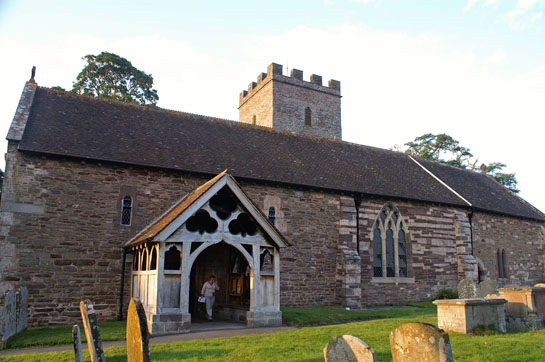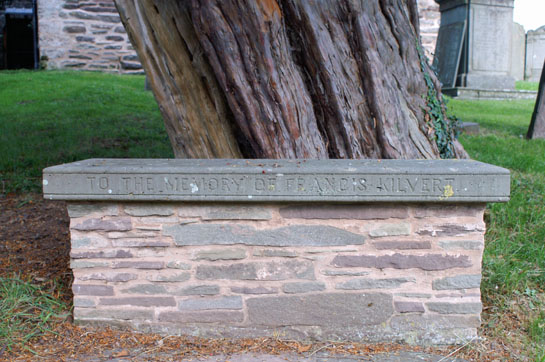|
Alphabetical List |
|
|
|
|
|
|
|
County List and Topics |
|
|
|
Please sign my Guestbook and leave feedback |
|
|
||||||||||||||||||||||||||||
|
Norman. Their inadequacy was presumably the reason for the rather large and clumsy gothic window in the newer part of the nave. The north tower dates from only 1790 and the pretty timber south porch from 1875. So far, so unexceptional. Of much more interest is the blocked north door which has a heavily decorated lintel. The belief is that this is c12 and hence later than the nave itself. The south door also has a decorated lintel, also thought to be a later insertion. The church is within the geographical precincts of the renowned Herefordshire School Of Romanesque Sculpture but those that are experts on that do not regard Bredwardine as belonging within it artistically. There are two effigies of mediaeval knights. The finest is believed to be Sir Robert Vaughan who was killed at Agincourt defending Henry V. The other is believed to be Walter Baskerville who died in 1369. What is interesting about this is that the very unlovable Ralph de Baskerville (1135-1194) was a patron of the Herefordshire School at Eardisley and at Stretton Sugwas. For more about him see my page on Eardisley. Bredwardine with its now-disappeared motte and bailey castle passed to the Baskervilles in the early c13. So there is a connection. More interesting still, however, is that a slab inset into one of the windows of Eardisley Church has very similar decoration to the lintel of the south door at Bredwardine Church. Where did that slab come from? It was surely a fragment of the church that was redundant when Eardisley acquired a south aisle in 1200. So let’s sum all that up. Eardisley’s south door (at least) would have become redundant in around 1200. A fragment looking very like the Bredwardine lintels in set into a window in Eardisley Church. The de Baskervilles acquired Bredwardine at around 1200 and everyone believes that the lintels at Bredwardine post-date its original Norman doors. The two places are four miles apart. Does that rather sound to you as if these lintels came up the road from Eardisley to Bredwardine? Yes, it does to me too! Bredwardine may not be within the Herefordshire School but I’m pretty sure it carved the door lintels! |
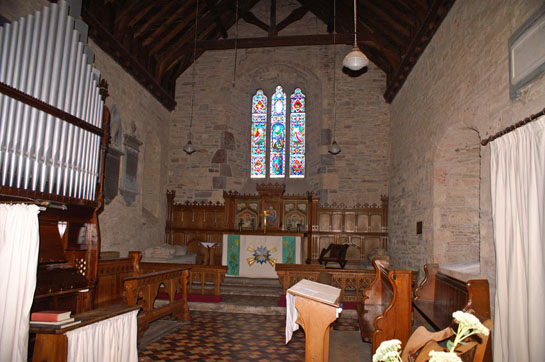 |
|||
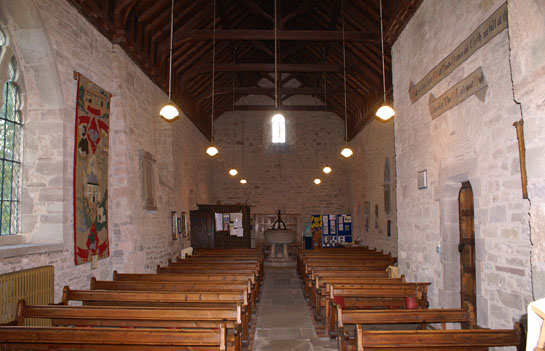 |
|||
|
Left: The chancel. Bredwardine is a somewhat cluttered church, full of curtains, notice boards and bits ‘n’ pieces. It makes the place messy but it also shows it’s a living church not just a museum for the likes of myself to enjoy. The inconveniently-placed organ makes it impossible to get a longer short of the chancel. Right: Looking towards the west. This is now a hefty length due to the loss of the central tower. To the right, presumably, is a doorway to what is now the north tower. Note the pink hue of the sandstone. |
 |
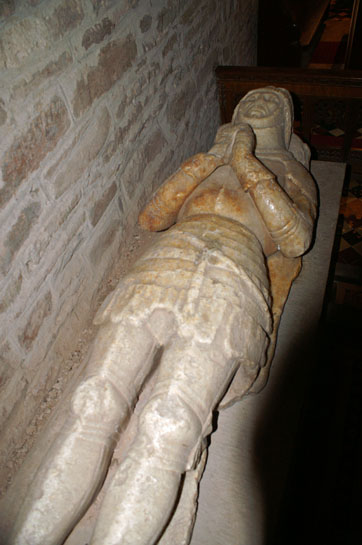 |
||||||||||||||
 |
|||||||||||||||
|
Left: The font is believed to be late c12, although if this was a church with Anglo-Saxon origins I see no reason why it shouldn’t also date from that period. It is composed of “breccia” which is a rock formed by the fusion of a variety of sedimentary rocks fused together by some sort of natural “cement”. Centre: The effigy of Sir Roger Vaughan in his plate armour. Right: The triangular headed Anglo-Saxon north doorway to the chancel. We need to be a little careful in invariably attributing such features uniquely to pre-Norman years: even the Normans had to used Saxon masons after the Conquest! Given the amount of Romanesque Norman work in this area, however, I think we can safely conclude that this doorway is of the Saxon period as well as of its style. |
|||||||||||||||
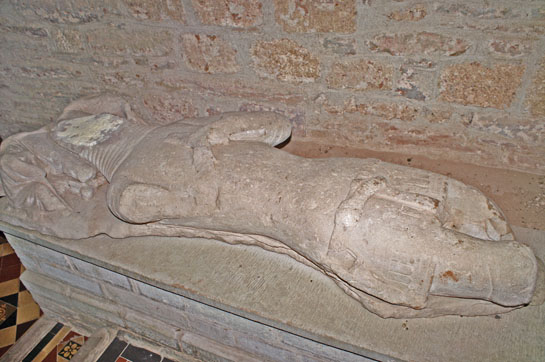 |
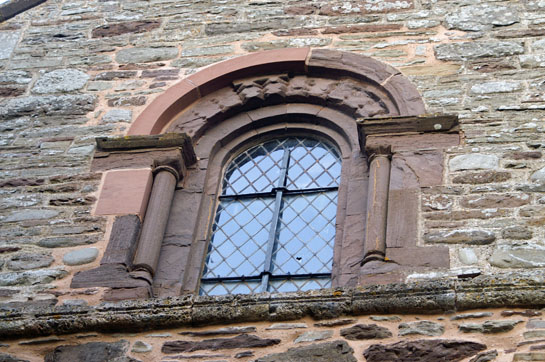 |
||||||||||||||
|
Left: The massive Baskerville effigy. Right: This apparently Norman west window is actually modern, although some Norman components have clearly been re-used. |
|||||||||||||||
 |
|||||||||||||||
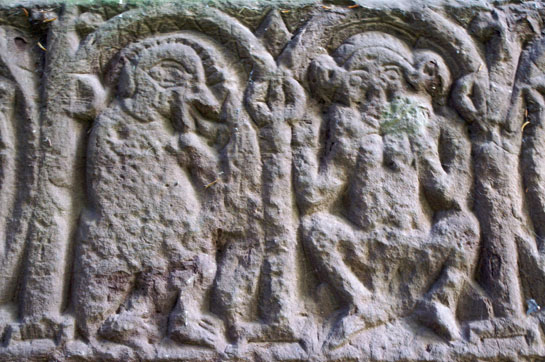 |
|||||||||||||||
|
Left: The lintel of the blocked north doorway. Note the circular motifs and compare it with that from Eardisley (below). They are not identical but those little nail-heads between the segments appear in both. Note also the slight variegation in the stone itself. Right: The detail of the central motifs. It’s not possible to say what the left hand figure is but the right hand one certainly looks like a monkey. Some say it is a sheelagh-na-gig (a female exhibitionist figure) but this is a monkey not a person, so I don’t think it qualifies! In any event, sheelaghs usually have the hands holding open the pudendum and we can’t even be sure of the figure’s gender. Some church enthusiasts see sexual connotations everywhere...! |
|||||||||||||||
 |
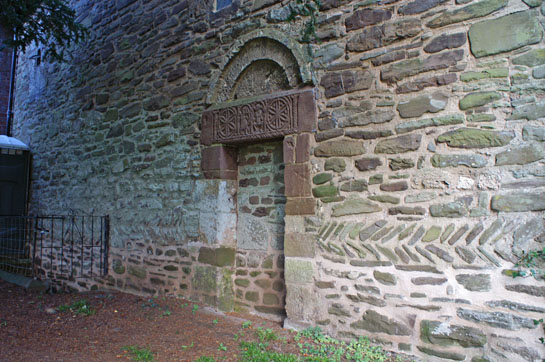 |
||||||||||||||
|
Left: The re-cycled window sill of Eardisley Church. Right: This view of the north wall shows clearly that the lintel was added later. It is altogether too massive for the doorway itself and would have obscured most of any carvings on the tympanum. Why it was deemed necessary is something of a mystery. Was it just too nice to discard (it would have been quite new in architectural time) and so given a home here? Note also in this picture the long course of herringbone masonry, a near infallible indicator of an Anglo-Saxon work. |
|||||||||||||||
 |
|||||||||||||||
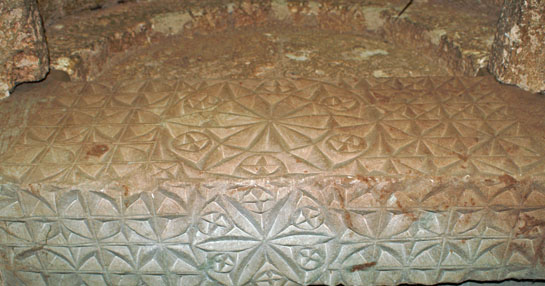 |
|||||||||||||||
|
Left: The even larger lintel over the south door. It does not resemble the north door lintel but both seem to owe something to the mason’s compasses .Again the tympanum has been partly obscured. Right: The lintel is also carved on its underside with a similar design. |
|||||||||||||||
 |
|||||||||||||||
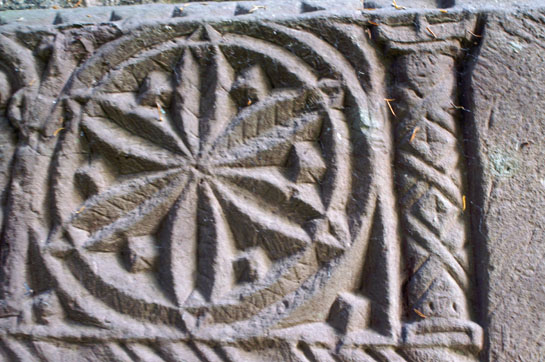 |
|||||||||||||||
|
Left: One of the south door capitals. Right: A closer view of the roundel design on the north door lintel. In this picture you can see very clearly that the geometric motifs at the centre have been inscribed to produce a leaf pattern. There are crosses inscribed around the circumference of the inner ring. The little baluster to the right is also finely carved. This was no bodged job! |
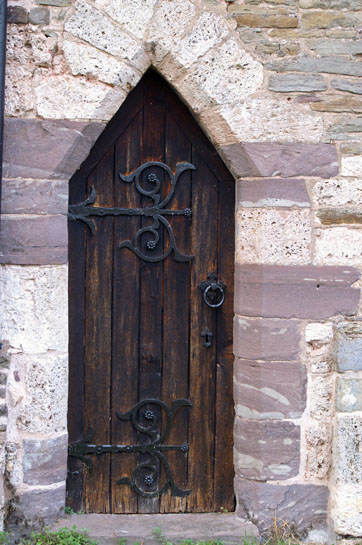 |
|||||
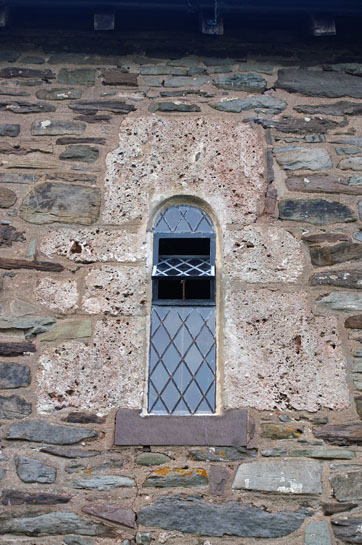 |
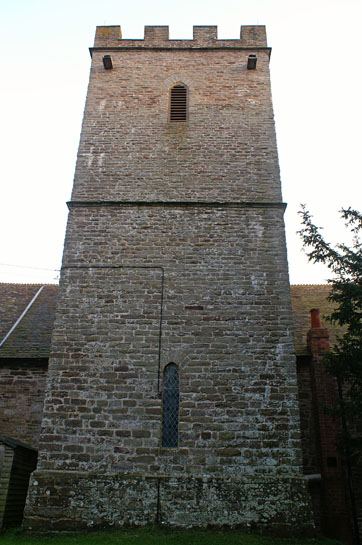 |
||||
|
Left: The triangular-headed Anglo-Saxon priest’s door. Centre: One of the Norman chancel windows. Note the enormous stones that surround it. Right: The north tower. |
|
|
||||||||||||
